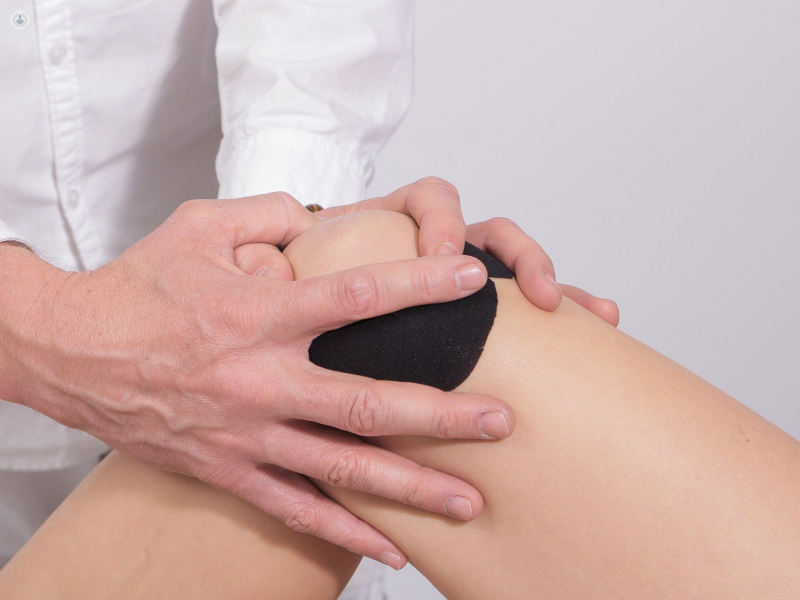ultimate guide patellofemoral disorders part 2
Escrito por:Following on from the first part of this ultimate guide to patellofemoral disorders, Mr Bilal M. Barkatali discusses both the surgical and non-surgical treatment options available for patellofemoral disorders. He also offers some general advice on how to look after your patellofemoral joints and keep your knee joints health.

What non-surgical treatments are available for patellofemoral problems?
For patellofemoral instability, the main treatment depends on the severity of the problem. Unfortunately, some people have debilitating regular dislocations of their patella and there is no conservative or non-operative treatment for this and usually requires surgery.
If the patient has had a single episode of dislocation or instability then we usually recommend a course of focused physiotherapy that can rehabilitate the joint. Up to 50% of patients don't go on to have further problems after undergoing physiotherapy.
With regards to cartilage damage or early osteoarthritis in the patellofemoral joint, the non-surgical treatment is again physiotherapy. However, new biological treatments have emerged such as PRP (platelet-rich plasma). This is a biological treatment where venous blood is extracted from the patient and then centrifuged. The centrifugation process separates the platelets from the red and white blood cells. This concentrated platelet layer is then injected into the knee joint which helps to preserve the remaining cartilage. It is an excellent treatment for patients with early or mild damage to the cartilage within the knee joint.
What surgical treatments are available?
For patellofemoral instability, surgery depends on the underlying problem that is causing the patella to be unstable. The main treatment options are an MPFL reconstruction where either an autografted tendon or synthetic tissue is used to reconstruct the MPFL and provide more stability. If the patella is too high (patella alta), then the whole of the extensor mechanism can be moved further down, which positions the patella in the correct place. This, therefore, allows it to engage in the trochlea at the correct point.
This is done by performing a tibial tubercle osteotomy (TTO) and involves removing the tibial tubercle and moving it further down the tibia; however, this is a very invasive procedure.
If the underlying problem is trochlea dysplasia, then a trochleoplasty can be carried out where the trochlea cartilage is elevated and a new groove is fashioned, allowing the patella to sit and glide better. This can be done via open surgery or arthroscopically.
Who is at most risk of developing a patellofemoral joint problem?
Anyone can get it, but the patients we see at The Knee Clinic are generally younger female patients who started developing patellofemoral pain and dislocations in their teenage years - likely from some form of sporting activity.
We also see contact sports players e.g. rugby players who have a direct contact injury to the joint and also hill walkers and long-distance runners, who present with repetitive damage to the cartilage in this area.
What tips and advice can you offer?
The best advice I can offer is that you should look after your body and joints as best as possible. This can be done in several ways; by reducing the load going through the patellofemoral and knee articulation.
The best ways are to maintain a normal BMI (between 18 and 25) - carrying too much weight increases stress on the joint, as mentioned previously. Make sure that you are also strengthening your quads, hamstrings and calf muscles with exercises such as squats and lunges.
When performing high-level sports, a strong core and posture i.e. in the abdominal and the lumbar area, as well as the gluteal muscles and hip muscles, are very important. It has a knock-on effect on the stability of the muscles in the lower limbs.
If you have a problem, it is always good to get an opinion from an expert in knee surgery as well as a good physiotherapist.
If you are experiencing any of the knee symptoms mentioned in this article, visit Mr Barkatali’s Top Doctors profile and book a consultation.


